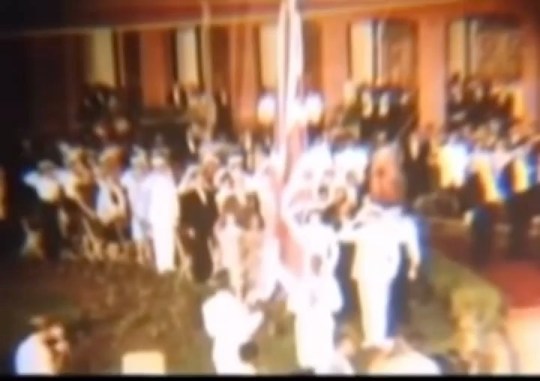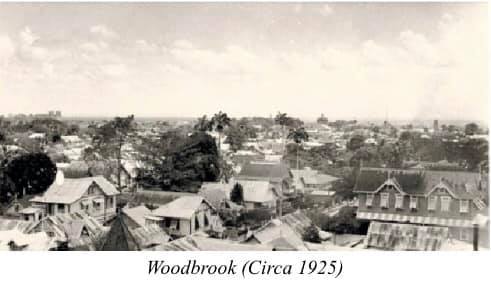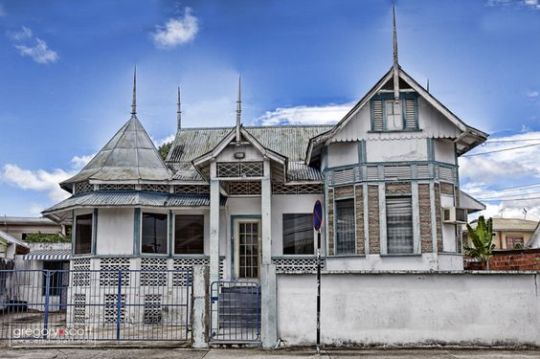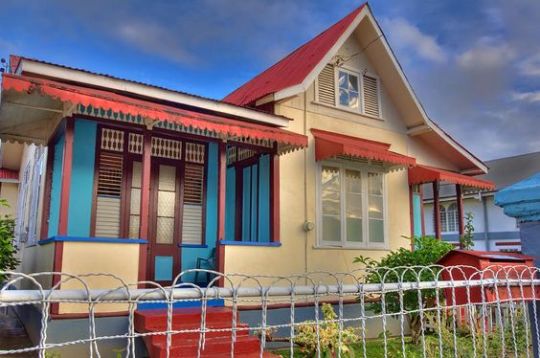#1783 cedula of population
Text
#caribbean carnival#carnival roots#caribbean history#carnival culture#carnival takes#catholicism#france#catholic presence#canboulay#trinidad & tobago television#dominican republic#spanish colonies#1783 cedula of population#oppression#french colonies#dominica#st lucia#grenada#martinique#intra caribbean migration#cape verde#portuguese#mardi gras#haiti#modern carnival
0 notes
Text

Regarded as Trinidad’s first great painter, Michel-Jean Cazabon was born 210 years ago on Corinth Estate in Naparima, San Fernando on this day in 1813. He became famous internationally as an artist who was renowned for his paintings of Trinidad’s sceneries, as well as his portraits of planters, merchants, and the working class during the 19th century.
Cazabon's paintings are to be cherished not only for their beauty, but also for their historical importance, as his paintings have left us with a clear picture of what many aspects of life was like in Trinidad throughout much of the 19th century. His detailed depictions of everyday life are significant for showcasing an untouched Trinidad, before the age of heavy industrialisation during the 20th century.
Additionally, he chose formerly enslaved persons and indentured immigrants as subjects for his portraits, from the plains of Caroni and the tropical forests of Chaguaramas; a unique decision during that time to not choose the wealthy colonial authorities instead.
Cazabon came from a family of “free coloured” immigrants from Martinique who migrated to Trinidad following the Cedula of Population of 1783, and this may have influenced the topics he chose to depict in his art.
He was sent to Paris during the 1830s to study medicine, but instead focused on art and studied under the master painter Paul Delaroche. His pieces were exhibited at the Louvre Museum in Paris and in many galleries throughout Italy and the United Kingdom. He subsequently settled at home in Trinidad where he taught art, and Lord Harris - Governor from 1848 to 1854 - became his patron and collected many of his pieces before Cazabon’s passing in 1888.
This photo showing a drawing of Corbeaux Town, Port of Spain by M J. Cazabon is courtesy of the book “Album of Trinidad: From Drawings by M. J. Cazabon”, which is part of the National Archives of Trinidad and Tobago Special Collection.
References: Cazabon, Michel J. Album of Trinidad 1857. M.N. Pereira, 2002.
#micheljeancazabon #cazabon #nationalarchivestt #nationalarchives #knowyourhistory #trinidadandtobago #caribbeanhistory #westindianhistory
0 notes
Photo

🔁 @etiennejazz ❤️🖤🤍August 31st 1962 Independence Day for my country, Trinidad & Tobago. I could only imagine the pride the nation felt breaking loose from the British Empire. Dr. Williams’ words were well chosen and eloquently delivered. NB his definition of democracy. We didn’t get here overnight. Here are some key moments in our history July 31st 1498 Columbus and crew see the coast of the land, Iere. He chose his own name for the island, Trinidad, ‘Claiming’ the island as a Spanish colony. 1783 Cedula of the Population brings Thousands to the island. Many who came were french planters and their African captives. February 18th 1797 A massive British army of 10,000 under the command of Sir Ralph Abercromby men march onto Trinidad. February 21st 1797 Spanish Governor Jose Maria Chacone surrenders to Abercromby and his men. The island, formerly known as Iere, now known as Trinidad becomes a British Colony with Lieutenant General Sir Thomas Picton being installed as Governor. 1833 British government passed the Emancipation Bill announcing the end to the institution of African enslavement beginning August 1, 1834 with the stipulation that agricultural slaves would have to continue to work as “apprentices” for six years, while domestic slaves would receive their full freedom. Apprenticeship ended on August 1, 1838 which is now commemorated as Emancipation Day. 1881Canboulay Riots 1932 Young Eric Williams wins a scholarship to study at Oxford. 1948 Dr. Williams returns to Trinidad to become Deputy Chairman of the Caribbean Research Council 1955 Dr. Williams starts giving public lectures to large audiences in Woodford Square after his contract with Caribbean research council was not renewed. 1956 He the forms the People’s National Movement. I write all this to say, everything is a result of something, or a few things. Big things take time, movements take persistence, strategy, patience and drive. Use what you have, do what you can. Wishing my nation peace and prosperity as we strive to continue growing with our watchwords in mind : Discipline, Production & Tolerance. HAPPY 60th INDEPENDENCE!! #massadaydone #fuckcolonialism https://www.instagram.com/p/Ch774fKusQ4F-G1Pxo-WCDzFnHZMoAGDBVpni80/?igshid=NGJjMDIxMWI=
1 note
·
View note
Text
History of Woodbrook Trinidad

Woodbrook began as an amalgamation of sugar cane estates.
The largest estate, called Woodbrook, was owned by Picot de Lapeyrouse, who came to Trinidad in 1783 under the Cedula of Population and founded the first sugar estate on the island.
Ownership of the Woodbrook Estate changed hands many times.. until in 1899 when it was sold to the Siegert brothers - Carlos, Alfredo, and Luis - you know, the ones who founded Angostura Bitters.



The Siegert brothers began to develop the estate as a housing development, and named many of the streets after themselves and their children. Streets like Alfredo, Ana, Alberto, Cornelio, Carlos, Gallus, Luis, Petra and Rosalino.
Their cheap housing lots eventually became a suburb for a new energing middle class... who strove to emulate the finer graces of the ruling elite. And this reflected in the quaint houses which, though small in size, often exhibited the elegance of the gingerbread style.
Due to many bad investments, however, Siegert sold Woodbrook Estate to the Government in 1911.
Residences have since been overcome by commercial development. Woodbrook is now a premiere commercialised liming spot for Trinis, but it remains a living museum of architecture as well.
~From the Facebook page of Dominic Kalipersad
#Galleryyuhself/Woodbrook#Galleryyuhself/Siegert brothers Galleryyuhself/cheap housing#sugar estates#history of Trinidad and Tobago#investments#housing developments#Lapeyrouse#Cedula of population middle class#middle class#suburbs#ruling elite#class structure#buying power#money
0 notes
Text
1781 - 1805
1781 May 9 – General John Campbell, defender of the British colony of West Florida, surrenders the capital at Pensacola to Spanish forces commanded by Bernardo de Galvez. May 18 – A Spanish army sent from Lima puts down the Inca rebellions, and captures and savagely executes Túpac Amaru II. September 4 – Los Angeles is founded as El Pueblo de Nuestra Señora la Reina de Los Ángeles de Porciuncula ("City of Our Lady the Queen of the Angels of Porciuncula"), by a group of 44 Spanish settlers in California. October 19 - General Charles Cornwallis surrenders to General George Washington at Yorktown, Virginia, ending the armed struggle of the American Revolution. October 20 – A Patent of Toleration, providing limited freedom of worship, is approved in the Habsburg Monarchy. November 29 - English slave traders begin to throw approximately 142 slaves taken on in Accra overboard alive from the slave ship Zong in the Caribbean Sea to conserve supplies for the remainder; the Liverpool owners subsequently attempt to reclaim part of their value from insurers. Joseph II, Holy Roman Emperor abolishes serfdom. Immanuel Kant publishes his Critique of Pure Reason. 1782 March 31 – Mission San Buenaventura is founded in Las Californias, part of the Viceroyalty of New Spain. British Parliament extends James Watt's patent for the steam engine to the year 1800. 1783 February 3 – American Revolutionary War: Great Britain acknowledges the independence of the United States of America. April – Peace and Commercial Treaty signed between the newly-formed United States and Sweden in Paris September 3 – Peace of Paris treaty between the United States and Great Britain is signed in Paris, formally ending the American Revolutionary War and granting the United States independence from Great Britain; and treaties are signed between Britain, France and Spain at Versailles, ending hostilities with the Franco-Spanish Alliance. This is also the beginning of the Old West. November 24 – In Spain, the Cedula of Population is signed, stating that anyone who will swear fealty to Spain and is of the Roman Catholic faith is welcome to populate Trinidad and Tobago. Loyalists from New York settle Great Abaco in the Bahamas. 1784 - King Carlos III of the Spanish Empire authorizes land grants in Alta California 1785 October 17 – The Commonwealth of Virginia stops the importation of new African slaves by declaring that "No persons shall henceforth be slaves within this commonwealth, except such as were so on the seventeenth day of October, 1785, and the descendants of the females of them. November 28 – The Treaty of Hopewell is signed between the United States of America and the Cherokee Nation The British government establishes a permanent land force in the Eastern Caribbean, based in Barbados. 1786 January 3 – The third Treaty of Hopewell is signed, between the United States of America and the Choctaw. April 2 – The Creek Nation declares war on the U.S. State of Georgia over the matter of white settlers on land not ceded by the Creek nation. A truce is negotiated on April 17 between Creek Chief Hoboi-Hili-Miko and U.S. Army General Lachlan McIntosh but is soon repudiated. July 14 – Convention of London: British settlements on the Mosquito Coast of Central America are to be evacuated & Spain expands the territory available to the British in Belize on the Yucatán Peninsula, for cutting mahogany The Cabinet of Great Britain approves the establishment of a penal colony, at Botany Bay in Australia December 4 – Mission Santa Barbara is founded by Padre Fermín Lasuén as the tenth of the Spanish missions in California 1787 May 22 – In Britain, Thomas Clarkson and Granville Sharp found the Society for Effecting the Abolition of the Slave Trade, with support from John Wesley, Josiah Wedgwood and others. July 13 – The Congress of the Confederation enacts the Northwest Ordinance limiting the expansion of slavery. December 8 – La Purisima Mission is founded by Padre Fermín Lasuén as the eleventh of the Spanish missions in California. Freed slave Ottobah Cugoano publishes Thoughts and Sentiments on the Evil and Wicked Traffic of the Slavery and Commerce of the Human Species in England 1788 June 9 – The African Association, an exploration group dedicated to plotting the Niger River and finding Timbuktu, is founded in England. June – The Inconfidência Mineira is the first attempt at Brazilian independence from Portugal. July 14 - French Revolution begins Former slave Olaudah Equiano's autobiography The Interesting Narrative of the Life of Olaudah Equiano, one of the earliest published works by a black writer, is published in London 1790 February 11 – Two Quaker delegates petition the United States Congress for the abolition of slavery
0 notes